Despite its very humble face value of one cent, an ordinary-looking 1897 Indian Head penny can still fetch $3. In mint state MS (60-70), its value typically exceeds $65 at auction.
It’s important to note that an error and the original red luster substantially amplify the worth of these antique coins.
In this article, we’ll look into the history, design, grading, errors, and auction records of the 1897 Indian Head penny. Through this exploration, you’ll gain valuable insights on maximizing its potential. Without further ado, let us commence.
1897 Indian Head Penny Value Ranges
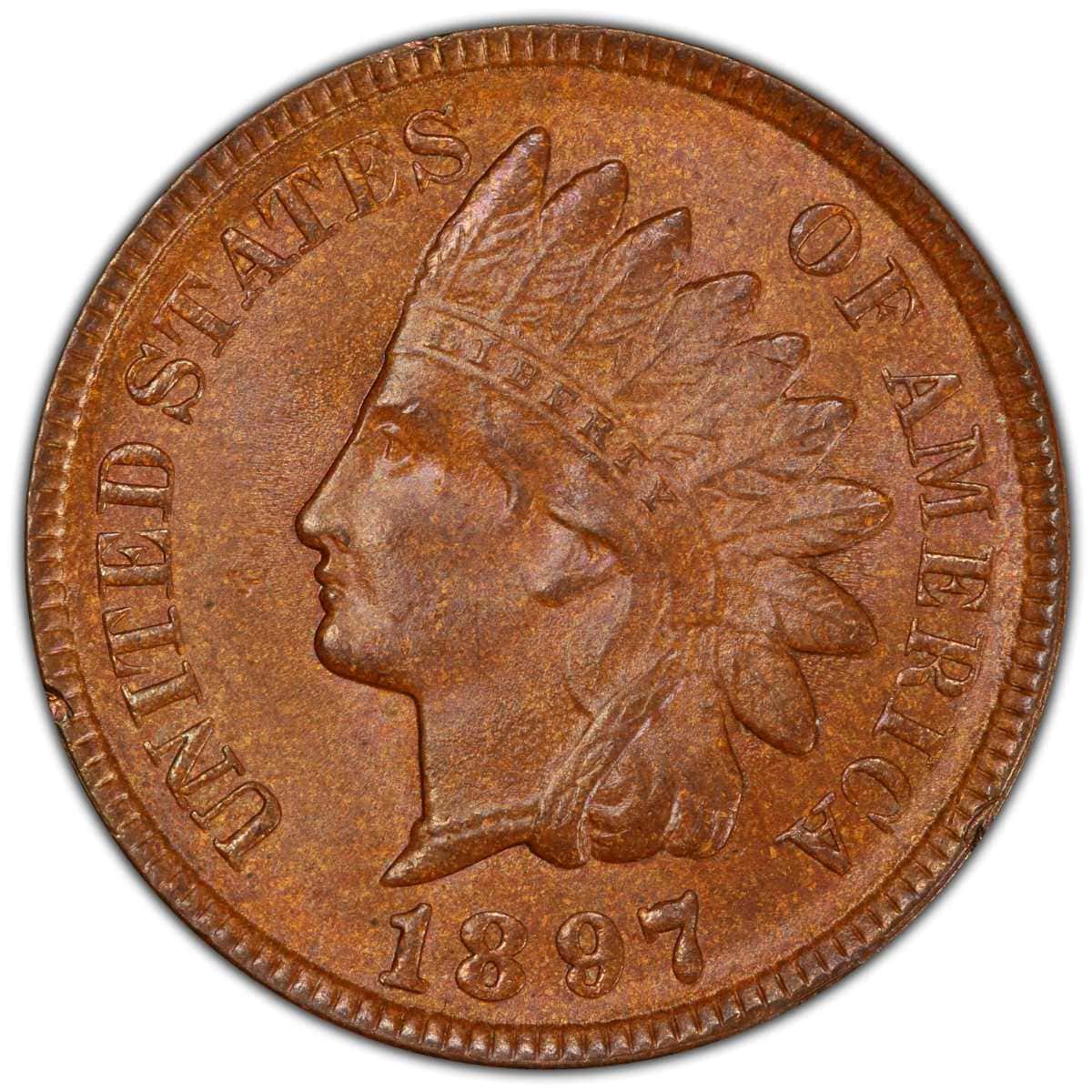
Here are the average prices 1897 Indian Head pennies go for, depending on the grade:
| Grade | Value Range |
| Good (4) | $3 |
| Fine (12) | $5 |
| Extremely fine (40) | $15 |
| About Uncirculated (50) | $25 |
| 1897 1c MS (60-70) BN | $0.85–$488 |
| 1897 1c MS RB | $90.00–$2,500 |
| 1897 1c MS RD | $208.00–$18,000 |
| 1897 Misplaced Date, 1 in Neck 1c MS BN | $33.75–$3,910 |
| 1897 Misplaced Date, 1 in Neck 1c MS RB | $1,310–$5,630 |
| 1897 Misplaced Date, 1 in Neck 1c MS RD | $3,130–$3,750 |
A mere 1,938 proofs and a substantial 50,464,392 business strikes of the 1897 Indian head penny were minted in the Philadelphia mint.
It’s important to note that the 1897 Indian Head proof coins were predominantly minted to inspect the dies. This starkly contrasts today, where mints make the most proof to cater to collectors to break even.
If you ever acquire an 1897 Indian Head proof coin with a grade of PR-63 or higher, it shall cost you no less than $292.
Proof coins from this era are exceedingly rare, making them the most expensive among the coins, even beating error coins. To express how rare the 1897 Indian Head proof coin is, here are some stats:
- The most expensive 1897 Indian Head proof coin with a PR67+ sold for an outstanding $108,000 in March 2021.
- Another proof coin with a similar grade also went for $40,800 in August 2019.
- Conversely, an MS67 (no error) sold for $31,725 in August 2014. This is the record sale for a business strike 1897 Indian head penny without any error.
Significance of Color On Indian Head Penny Value
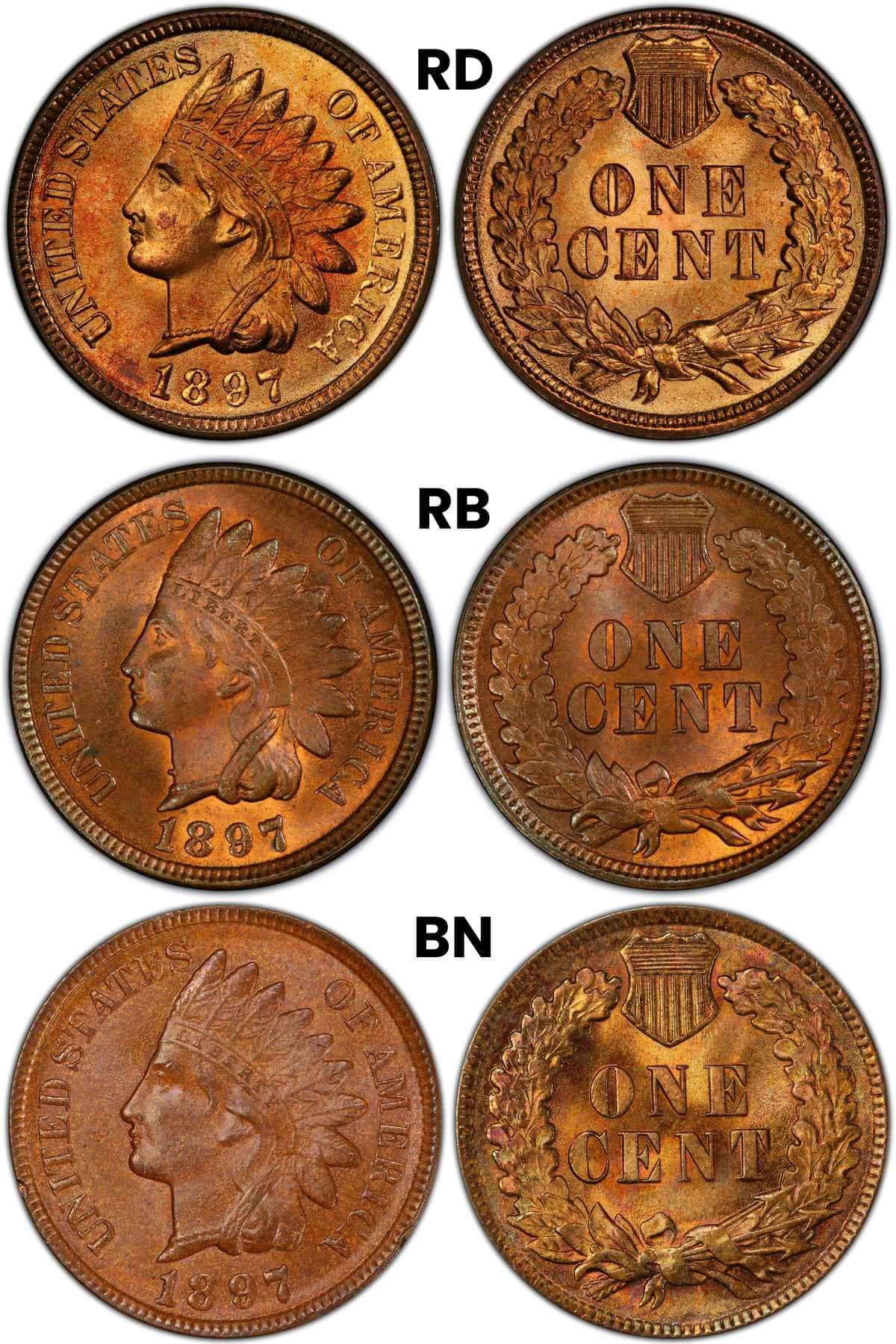
The value of any Indian head penny gets a substantial boost if it has a red (RD) or red-brown (RB) color. This tone indicates the preservation of its original copper luster.
For a coin to be classified as RD, it must retain at least 85% of its initial red luster. Conversely, a BN coin possesses nearly no original red color, exhibiting a subdued appearance.
As highlighted in our table, while an MS 67 RB (red-brown) might go for around $90.00–$2,500, an 1897 Indian head of the same grade in RD (red) will fetch prices ranging from $208.00–$18,000. The difference in valuation due to color is considerable.
Red coins are sought after because they don’t exhibit signs of oxidation or corrosion. In contrast, red-brown coins display traces of red along with brown areas. Brown Indian Head pennies have completely lost their red hue and are considered the least valuable.
Valuable Errors On The 1897 Indian Head Penny
1897 Indian head pennies with errors, like the ‘1 in Neck’, double strikes, or a re-punched date can be quite valuable, especially in higher grades.
For example, according to our table, this 1897 1c MS RD coin would fall within the $208 to $18,000 range. It could reach the upper end of that range because it boasts an exemplary mint state 67+ grading.
However, the re-punched date error makes this coin even more special because it was sold for an impressive $45,600 in August 2019. Remnants are visible at the top of the lower loop of the 8 and on the 9’s lower curve.
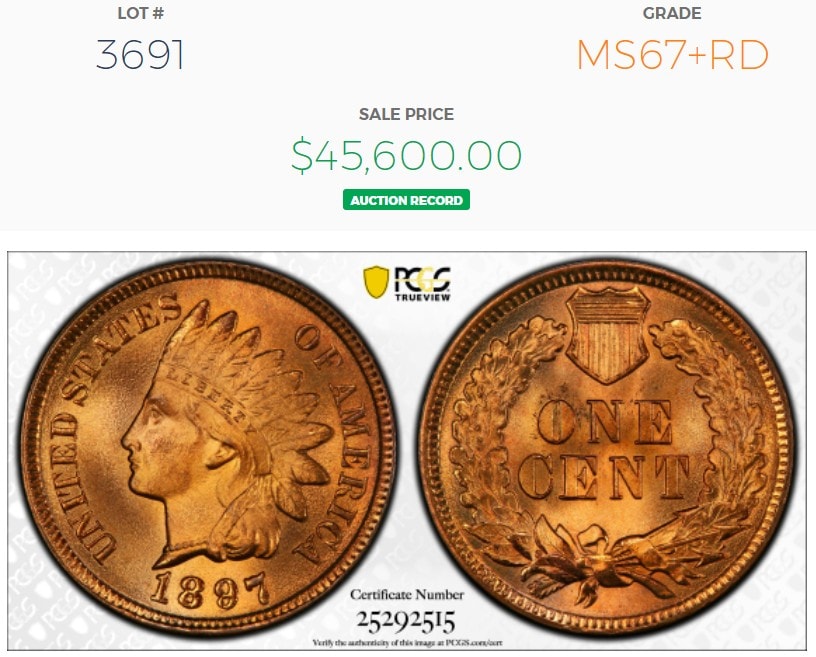
The Rich History of the 1897 Indian Head Penny
The 1897 Indian Head Penny is part of the iconic American coin series minted between 1859 and 1909. Collectors and investors usually get these valuable pennies in mixed-date rolls and coin shops to complete their collection.
Indian head pennies reflect late 19th-century geopolitical changes. Detail on the surface of the coins offers valuable insights into the American experience during a pivotal time.
The Indian head penny epitomizes the resilience shown during the panic of 1893, when there was an economic depression that ended in 1897—coincidentally, when this coin was minted.
These coins are a reminder of the westward expansion (1801–1861). We’d like to point out that the design of this Indian head penny is ironic, considering the expansion was at the expense of Native American communities.
The Philadelphia Mint was the exclusive producer of the 1897 Indian head penny. Only the San Francisco mint took a turn to churn out some Indian Head pennies in their last two years of production, 1908 and 1909. For this reason, the 1897 1 C does not have a mint mark.
Design, Composition, and Intricate Details

James B. Longacre, who served as the chief engraver of the US Mint from 1844 until his passing in 1869, designed the Indian Head penny series.
Longacre also designed coins like the Flying Eagle cent, the Shield nickel, and the two-cent piece, which became the first coin to bear the motto “IN GOD WE TRUST” in 1864.
Physical Attributes and Material Composition
Here are the physical features of an 1897 Indian head penny:
- Material: 95% copper, 5% tin and zinc
- Color: Reddish-brown hue when freshly minted
- Weight: 3.11 grams
- Diameter: 19 mm
- Edge: Plain, lacking reeds or grooves
Obverse and Reverse Design
On the front of the 1897 Indian Head penny is a bust of a Native American/ Miss Liberty wearing a feathered headdress, facing left, with “LIBERTY” on the band. The minting year “1897” is below the bust, and above it reads “UNITED STATES OF AMERICA.”
The reverse side features a shield, acorn leaves, and an oak wreath, with a ribbon tied and three arrows pointing to the right. In the middle of the wreath, you’ll find the denomination “ONE CENT” in two lines.
1897 Indian Head Penny Errors
Errors in an 1897 Indian head penny stem from anomalies or alterations during the minting process. Errors give the coin a unique feature that makes them rare and thus attractive to collectors.
It should come as no surprise that you can get many types of errors on these ancient coins because the technology used to make them wasn’t as advanced as today. Here are some of the flaws you might get in an 1897 Indian head penny:
1897 Penny 1 in Neck Error
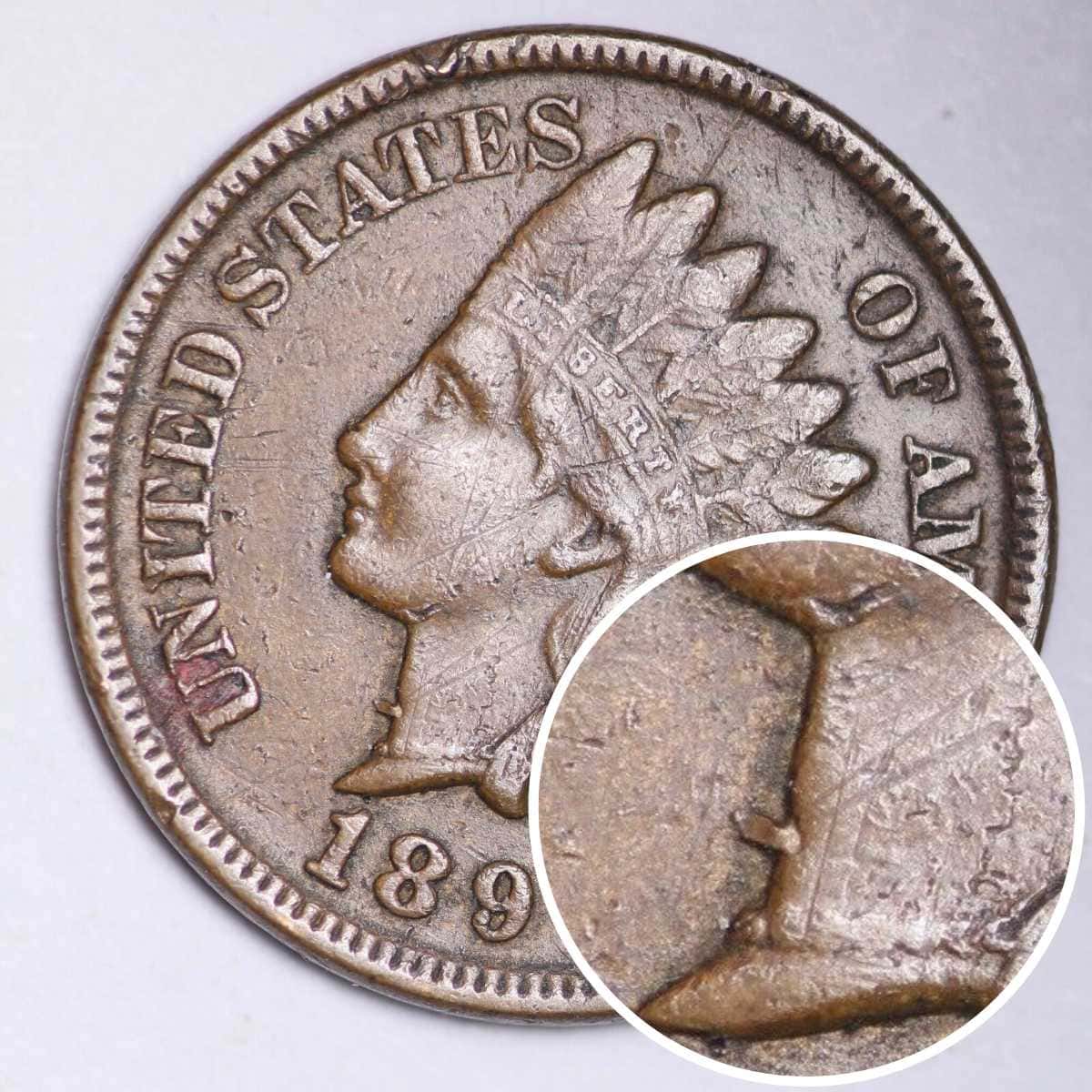
This error occurs when the “1” from the date “1897” is struck into the neck of the Indian head. It’s believed to occur due to a misaligned die. If you get this error in a clean 1897 Indian head penny, consider having it graded because it can be quite valuable.
This coin, described as Extra Fine (XF), despite a dent on the edge, is still valued at $456. Even heavily circulated pieces like this can fetch $95 simply because of the error.
1897 Penny Off-Center Error

This error occurs during minting when the blank metal disc (planchet) isn’t centered under the coin press. As a result, there’s an off-center strike, leading to missing or misaligned parts of the design.
This ungraded 1897 Indian head penny has a blatant 15% off-center strike and is priced at $248.
1897 Penny Misplaced Date (MPD) or Re-Punched Date (RPD)

Errors like this occur on a coin when the die punches it more than once. This repetition results in multiple date impressions in different positions. The extra detail is usually slightly offset, making the misprint obtrusive or giving the appearance of doubling.
This coin that’s available for $29, featuring re-punched dates on the 8 and 7.
1897 Penny Struck Through Debris
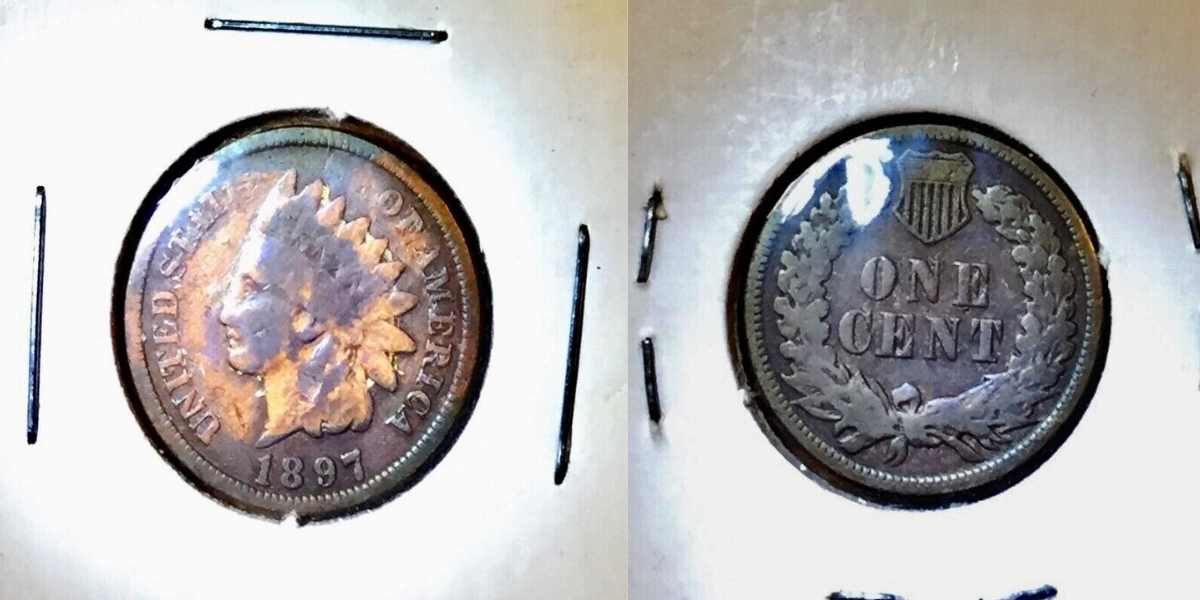
This anomaly arises when foreign matter or debris is present on the die during the striking process. Remnants yield a distinctive and unusual appearance on the coin.
To illustrate, consider this 1897 Indian cent penny, struck through a trace of grease. It is now going for $11 despite it looking like scrap.
1897 Penny Die Gorge/ Scratch Error

These types of flaws can happen if the planchet or striking die has a foreign object, like debris, causing lines or scratches on the coin. Also, after repeated strikes, dies can be damaged, creating imperfections in the coins it produces.
Despite this 1897 Indian Head penny looking worse for wear, it still commands a price of $10 due to the error. It would have been valued much higher if it was in mint state condition.
Collectability and Investment Potential of 1897 Indian Head Penny
The 1897 Indian Head penny is a treasured coin among numismatists. Fortunately, due to the high mintage numbers, an 1897 1C coin is more accessible than others from previous years of the series.
Fortunately for collectors, the value of an 1897 Indian head penny will likely continue to increase. Most of these coins are in poor condition, and finding a high-grade specimen with a red color designation is continuously becoming very difficult and expensive.
Study the fine details when you analyze an 1897 Indian Head penny using a magnifying glass. Look for signs of wear, damage, cleaning, toning, corrosion, alterations, and errors affecting its value.
If you are getting one of these ancient coins, only buy from reputable dealers or auction houses that guarantee your purchase. Compare these 120-year-old coins to reference images of different grades to help your assessment.
Use professional graders like NGC and PCGS to enhance the value of your high-quality 1-cent coin from 1897. They also know how to accurately identify the coin’s copper luster and verify errors that add value.
Conclusion
An 1897 Indian Head penny is a relic in your locker that connects you with the past—a window into late 19th-century American history. Look at its condition, color, and any potential error that affects its value.
Get these ancient coins graded using trusted sources to increase their worth. Look for rare variants with errors and deal with reputable individuals. Many scammers try to pass off counterfeit coins as valuable 1897 Indian Head pennies.
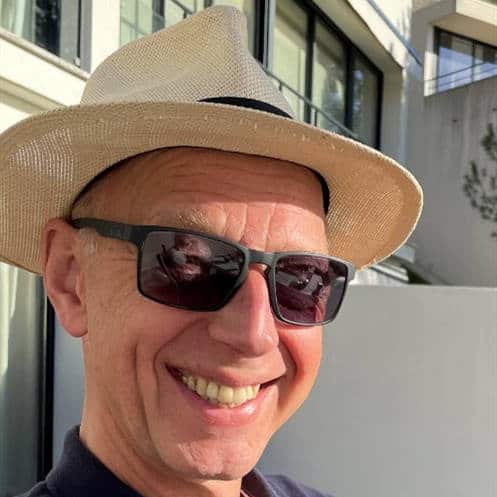
Jenson is a professional numismatist, a dedicated coin collector, a graduate of the College of Business at Oregon State, a life member of the American Numismatic Association (ANA), and an overall coin nerd. He is the founder of Coin Value List.
